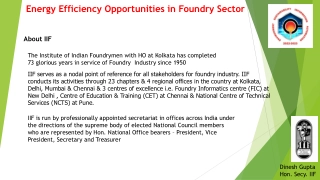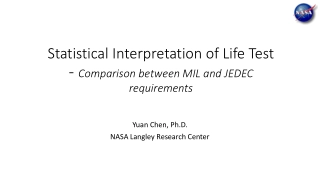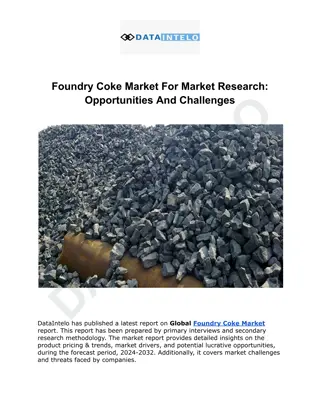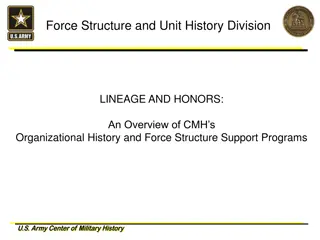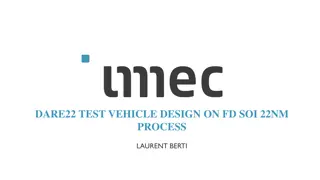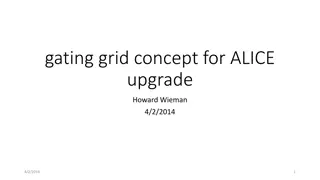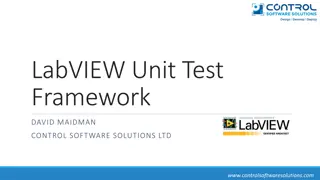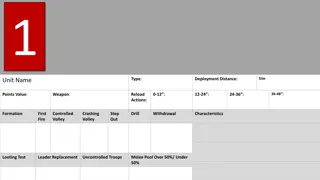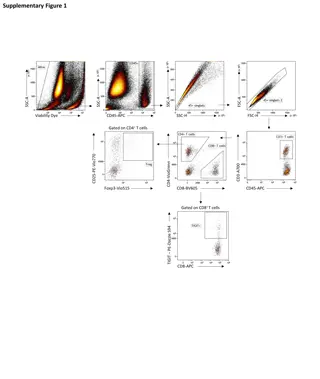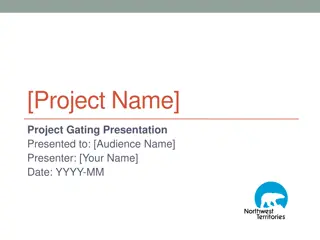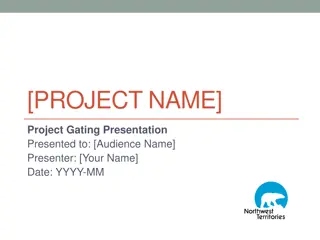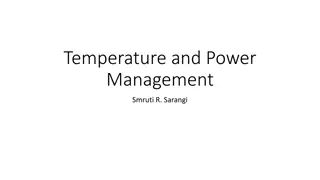Foundry Technology Unit 4: Gating and Risering System Overview
In Unit 4 of Foundry Technology, the focus is on Gating System, Risering System, and Quality Control in Foundry. The content covers components of the gating system, considerations for defect-free casting, proper design requirements, and factors affecting the functioning of the gating system. Key topics include gating design, risering practice, casting defects and remedies, and quality control tests. Understanding these concepts is essential for ensuring a successful and efficient foundry operation.
Download Presentation

Please find below an Image/Link to download the presentation.
The content on the website is provided AS IS for your information and personal use only. It may not be sold, licensed, or shared on other websites without obtaining consent from the author. Download presentation by click this link. If you encounter any issues during the download, it is possible that the publisher has removed the file from their server.
E N D
Presentation Transcript
FOUNDRY TECHNOLOGY UNIT 4 1 -Monil Salot
SYLLABUS UNIT 4 Gating System: Elements of gating system. Classification. Gating design considerations, Gating ratio. Pouring equipments. Risering System: Risering practice Functions of riser, Directional and progressive solidification. Centerline feeding resistance. Riser efficiency. Riser design considerations. Risering curves. Cain s, N.R.L. and Modulus methods, Feeding distance and feeding aids, Blind and atmospheric risers Quality Control in Foundry: Casting defects, their causes and remedies. Shop floor quality control tests such as composition control, Wedge test, fluidity, temperature measurement etc. 2
GATINGSYSTEM The term gating system refers to all passageways through which the molten metal passes to enter the mould cavity. The gating system is composed of Pouring basin Sprue Runner Gates Risers
Any gating system designed should aim at providing a defect free casting. This can be achieved by considering following requirements. A gating system should avoid sudden or right angle changes in direction. A gating system should fill the mould cavity beforefreezing. The metal should flow smoothly into the mould without any turbulence. A turbulence metal flow tends to form dross in the mould. Unwanted materials such as slag, dross and other mould materials should not be allowed to enter the mould cavity. The metal entry into the mould cavity should be properly controlled in such a way that aspiration of the atmospheric air is prevented.
A proper thermal gradient should be maintained so that the casting is cooled without any shrinkage cavities ordistortions. Metal flow should be maintained in such a way that no gating or mould erosion takes place. The gating system should ensure that enough molten metal reaches the mould cavity. It should be economical and easyto implement and remove after casting solidification.
TH For proper functioning of the gating following factors need to be controlled. E Type of basin etc. Temperature/ Fluidity of molten metal. Rate of liquid metal pouring. Type and size of sprue. Type and size of runner. Size, number and location of gates connecting runner and casting. Position of mould during pouring and solidification. pouring equipment, such as ladles, pouring
A pouring basin makes it easier for the ladle or crucible operator to direct the flow of metal from crucible to sprue. Helps maintaining the required rate of liquid metal flow. Reduces turbulence at the sprue entrance. Helps separating dross, slag etc., from metal before it enters the sprue.
If the pouring basins are made large, Dross and slag formation will tend to float on the surface of the metal and may be stopped from entering the sprue and hence the mould. They may be filled quickly without overflowing and may act as a reservoir of liquid metal to compensate metal shrinkage or contraction.
SPRU E A sprue feeds metal to runner which in turn reaches the casting through gates. A sprue is tapered with its bigger end at top to receive the liquid metal. The smaller end is connected to runner.
GA TES A gate is a channel which connects runner with the mould cavity and through which molten metal flows to fill the mould cavity. A small gate is used for a casting which solidifies slowly and vice versa. A gate should not have sharp edges as they may break during pouring and sand pieces thus may be carried with the molten metal in the mould cavity. Types Top gate Bottom gate Parting line side gate
TOPGATE A top gate is sometimes also called as Drop gate because the molten metal just drops on the sand in the bottom of the mould. Generation of favourable temperature gradients to enable directional solidification from the casting towards the gate which serves as a riser too.
Disadvantages The dropping liquid metal stream erodes the mould surface. There is a lot of turbulence.
BOTTOM GATES A bottom gate is made in the drag portion of the mould. In a bottom gate the liquid metal fills rapidly the bottom portion of the mould cavity and rises steadily and gently up the mould walls. As comparison to top gate, bottom gate involves little turbulence and sand erosion. Bottom gate produces good casting surfaces.
DISADVANTAGES In bottom gates, liquid metal enters the mould cavity at the bottom. If freezing takes place at the bottom, it could choke off the metal flow before the mould is full. A bottom gate creates an unfavourable temperature gradient and makes it difficult to achieve directional solidification.
PARTING LINE SIDE GATE Middle or side or parting gating systems combine the characteristics of top and bottom gating systems. In this technique gate is provided along the parting line such that some portion of the mould cavity will be below the parting line and some portion will be above the parting line. The cavity below the parting line will be filled by assuming top gating and the cavity above the parting line will be filled by assuming bottom gating.
DESIGN OF GATING SYSTEM To fill the mould cavity without breaking the flow of liquid metal and without using very high pouring temperatures. To avoid erosion of mould cavity. To minimize turbulence and dross formation. To prevent aspiration of air or mould gases in the liquid metal stream. To obtain favourable promote directional solidification. temperature gradients to
DEFECTS OCCURRING DUE TO IMPROPER DESIGN OF GATING SYSTEM Oxidation of metal Cold shuts Mould erosion Shrinkages Porosity Misruns Penetration of liquid metal into mould walls.
REYNOLDS NUMBER (RE) Re = Vd =(density) (velocity) (diameter) (viscosity)
CRITICAL REYNOLDS NUMBER Re < 2,000 viscosity dominated, laminar flow Re > 4,000 inertia dominated, turbulent flow Controlled through gate and runner design
METAL FLOW RATE AND VELOCITY CALCULATIONS Studies of gating system have been based upon two laws of fluid dynamics. Law of continuity Q = A1V1 =A2V2 Q = volume rate of flow A = cross sectional area of flowpassage V = linear velocity of flow
BERNOULLIS EQUATION Used to calculate flow velocities Assumptions: steady state, incompressible, inviscid Flow P1/ g + V1 / 2g + h1 = P2/ g + V2 / 2g +h2 2 2 P =pressure = density v = velocity h = height above the datumplane
DESIGN CRITERIA FOR POURING BASIN The pouring basin should be designed such that the proper uniform flow system is rapidly established. This can be achieved by- Use of strainer core Use of DAM to make steady flow Use of sprue plug It should be easy and convenient to fill pouring basin.
DESIGN OF SPRUE As the liquid metal passes down the sprue it loses its pressure head but gains velocity. To reduce turbulence and promote Laminar Flow, from the Pouring Basin, the flow begins a near vertical incline that is acted upon by gravity and with an accelerative gravity force
pouring basin sprue 1 hc 2 ht 1 = free surface of metal 2 = spue top 3 = sprue bottom 3 Assuming entire mould is at atmospheric pressure (no point below atmospheric) metal in the pouring basin is at zero velocity (reservoir assumption)
Mass flow rate = A V =constant APPLYINGCONTINUITY BETWEEN POINT GET- EQUATION 2 AND 3 WE 2ght 2ghc ht hc A2=V3= A3 = V2 2 h hc A A3 t = 2 Actual shape of sprue is Parabola But in order to avoid manufacturing difficulty we use tapered cylinder shape.
Tapered sprue reduces the rate of flow at which the liquid metal enters the mould cavity and hence mould erosion is reduced. The area at the sprue exit controls- Flow rate of liquid metal into mould cavity Velocity of liquid metal Pouring time Choke is that part of the gating system which has the smallest cross section area. In a free gating system sprue serves as choke.
This reduces mould erosion and turbulence because velocity of liquid metal is less. This system causes air aspiration effect. In a choked system, gate serves as the choke. This creates a pressurized system. Due to high metal velocity and turbulence, this system experiences oxidation and erosion in mould cavity. The area at the sprue exit which if is the least is known as choke area and can be calculated from the following relation-
W = C A c.dt 2gH CAis choke area W is the weight of casting C is nozzle coefficient d is density of liquid metal t is pouring time H effective liquid metal head
POURING TIME High pouring rates leads to mould surface, excessive shrinkages etc. erosion, rough Low pouring rate may not permit the complete filling of the mould cavity in time if the molten metal freezes fast and thus defects like cold shuts may develop. It is very necessary to know optimum pouring rate or pouring time for metals to be cast. Optimum pouring rate a function of casting shape and size.
Pouring time for brass or bronze V aries from 15 seconds to 45 seconds may be used for casting weighing less than 150 kg. Pouring time for steel casting Steel has a high freezing range as compared to other cast alloys, it freezing. Pouring time = seconds is poured rapidly to avoid early W is weight of casting inlbs K is fluidity factor
Pouring time for gray cast iron casting casting weighing more than 1000 lbs. T 3 w seconds K 0.95+ 0.853 Casting weighing less than 1000 lbs T w seconds K 0.95+ 0.853 W is weight of casting in lbs T is average section thickness in inches K is fluidity factor
Pouring time of light metal alloys Unlike steel, Al and Mg alloys are poured at a slow rate, this is necessary to avoid turbulence, aspiration and drossing.
DESIGN OF RUNNERAND GATES In a good runner and gate design- Abrupt changes in section and sharp corners which create turbulence and gas entrapment should be avoided. A suitable relationship must exist between the cross- sectional area of sprue, runner and in gates.
GATING RATIO Gating ratio= a:b:c where, a= cross-sectional area of sprue b= cross-sectional area of runner c= total cross-sectional area of ingates. Gating ratio reveals- whether the total cross- section decreases towards the mould cavity. This provides a choke effect which pressurizes the liquid metal in the system. Whether the total cross-sectional area increases so that the passages remain incompletely filled. It is an unpressurized system.
S.N. Pressurized gating systems Unpressurized gating systems 1. Gating ratio may be of the order of 3: 2: 1 Gating ratio may be of the orderof 1: 3: 2 2. Air aspiration effect isminimum Air aspiration effect ismore 3. Volume flow of liquid from every ingate is almostequal. Volume flow of liquid from every ingate is different. 4. They are smaller in volume for a given flow rate Therefore the casting yield is higher. They are larger in volume because they involve large runners and gates as compared to pressurized system and thus the cast yield isreduced. of metal. 5. V elocity turbulence may occur at corners. is high, severe V elocity is low and turbulence is reduced.
Ideally, in a system, pressure should be just enough to avoid aspiration and keep to all feeding channels full of liquid metal. Gating ratio and positions of ingates should be such that the liquid metal fills the mould cavity just rapidly to- Avoid misruns and coldshuts in thin sectioned castings. Reduce turbulence and mould erosion in casting of thicker casting.
The maximum liquid metal tends to flow through the farthest ingate. For a gating ratio 1:2:4, 66% of liquid metal enters through gate no. 2 and only 34% does so through gate no. 1. Total ingate area is reduced by making gates farthest from sprue of smaller cross-section so that less volume of metal flows through them and makes a uniform distribution of metal at all ingates.
Besides with reduced total ingate area, still more satisfactory result may be obtained if runner beyond each ingate is reduced in cross section to balance the flow in all parts of the system and to equalise further velocity and pressure.
STREAMLINING THE GATING SYSTEM Streamlining includes- Removing sharp corners or junction by giving a generous radius. Tapering the sprue. Providing radius at sprue entrance and exit.
ADVANTAGES OFSTREAMLINING Metal turbulence is reduced. Air aspiration is avoided. Mould erosion and dross are minimized. Sound and clean casting are obtained.
POURING EQUIPMENTS Ladles are the commonly used equipment for pouring the molten form the furnace. After reading this article you will learn about the five main types of pouring ladles. The types are: 1. Hand Ladle 2. Shank or Bull Ladle 3. Tea Pot Ladle 4. Bottom-Poured Ladle 5. Monorail or Trolly Ladle. 46
Type # 1. Hand Ladle: It is a bucket with removable, lever arm and handle shank. It is used when the quantity of molten metal is small. It can be carried by a single person. Its carrying capacity varies from 10 to 20 kg. Fig. 4.7 (a). Type # 2. Shank or Bull Ladle: A shank or bull ladle is carried by two persons and used for medium capacity of molten metal. Its carrying capacity varies from 30 to 150 kg. Fig. 4.7 (b). 47
Type # 3. Tea Pot Ladle: Tea pot ladle is used for small and medium-sized mould. Tea pot ladle allows the molten metal to be taken out from the bottom opening provided. The bottom opening is advantageous as it does not disturb the slag floats on top. Fig. 4.7 (c). 48
Type # 4. Bottom-Poured Ladle: Bottom poured ladle is used for top-run or direct-pour into the mould. The molten metal is poured through the bottom hole, which is operated by a graphite stopper and lever. Slag, being lighter, floats at the top of the molten metal and pure metal is poured into the mould. Therefore, it is also known as self-cleaning ladle. Fig. 4.7 (d). Type # 5. Monorail or Trolly Ladle: The molten metal is carried in a trolly. The trolly is mounted on the monorail for easy movement to the pouring site. The molten metal is poured through a lever provided with crucible. A hand wheel is also provided for raising and lowering the crucible. Fig. 4.7 (e). 49

 undefined
undefined
















